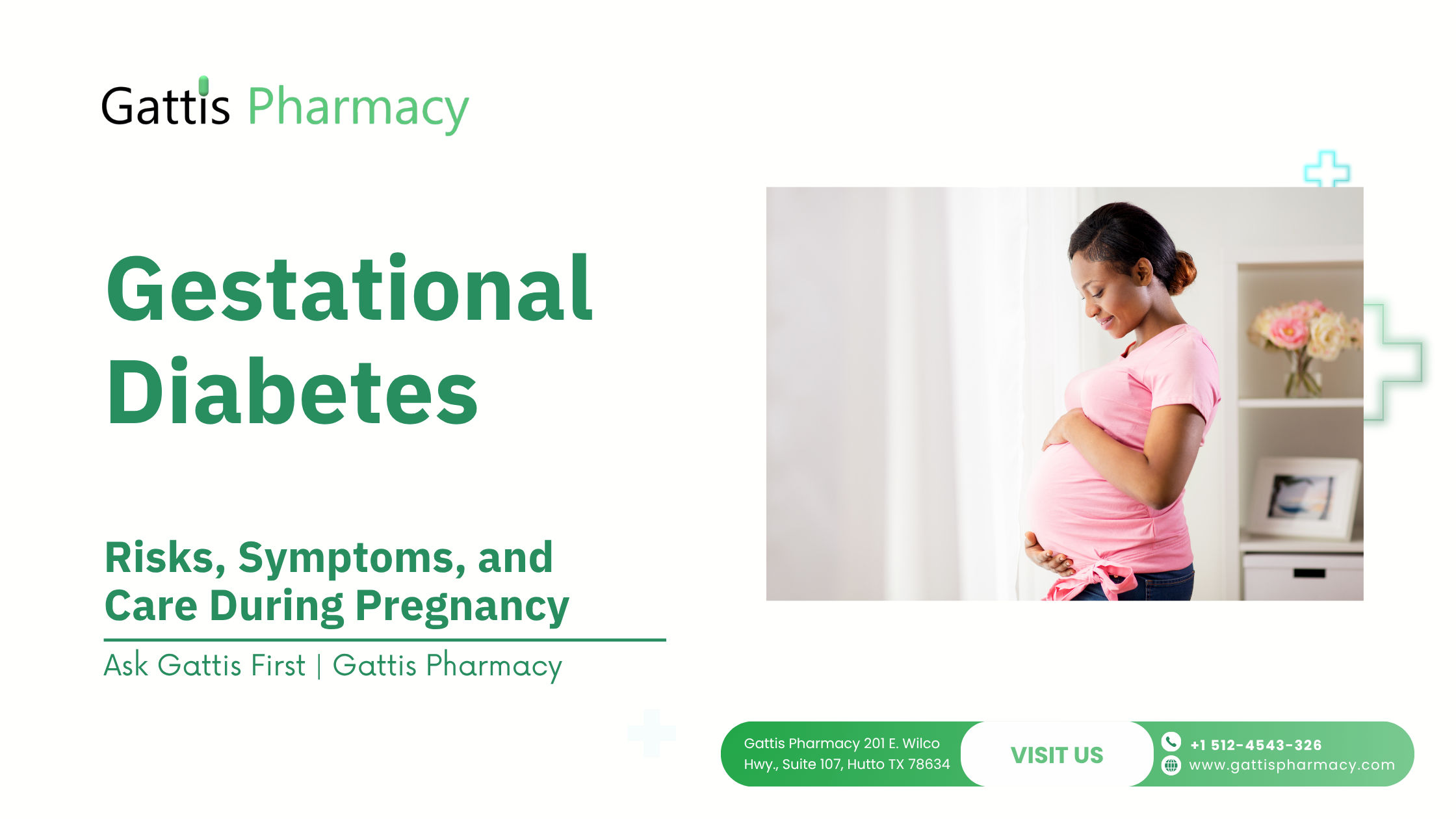Gestational diabetes is a type of diabetes that develops during pregnancy. It happens when your body cannot make enough insulin to handle the extra needs of pregnancy.
As a result, blood sugar levels rise and may affect both the mother and the baby.
In this guide by Gattis Pharmacy, we will learn the symptoms, risks, and ways to manage it for a healthy delivery.
What is Gestational Diabetes?
Unlike type 1 or type 2 diabetes, gestational diabetes only occurs during pregnancy. The hormones from the placenta can block the action of insulin, causing high blood sugar.
This condition usually develops around the 24th to 28th week of pregnancy. However, most women notice no clear symptoms. This is why screening during prenatal visits is very important.
Symptoms of Gestational Diabetes
Many women with gestational diabetes may not feel different, but some signs can appear. These include:
- Excessive thirst
- Frequent urination
- Fatigue
- Blurred vision
Because these symptoms can also feel like normal pregnancy changes, regular checkups help detect gestational diabetes early.
Risks of Gestational Diabetes
If not managed, gestational diabetes can affect both mother and child. Some risks include:
- Larger baby size, leading to difficult delivery
- Higher chance of cesarean section
- Increased risk of preeclampsia (high blood pressure in pregnancy)
- Higher chance of the baby developing low blood sugar after birth
- Greater risk of type 2 diabetes later in life for both mother and child
Therefore, early diagnosis and proper management make a big difference.
Managing Gestational Diabetes
With the right approach, women can have healthy pregnancies. Management includes:
1. Healthy Eating
A balanced diet with whole grains, lean protein, vegetables, and limited sugar helps control blood sugar.
2. Regular Exercise
Light activities such as walking, swimming, or prenatal yoga improve insulin use.
3. Blood Sugar Monitoring
Checking sugar levels daily helps track progress.
4. Medication if Needed
If diet and exercise are not enough, insulin or other medications may be prescribed.
In addition, regular prenatal visits are key to monitoring both mother and baby’s health.
Living After Gestational Diabetes
Most women see their blood sugar return to normal after delivery. However, having gestational diabetes increases the risk of developing type 2 diabetes in the future.
Therefore, follow-up care and healthy lifestyle choices are important even after pregnancy.
Conclusion
Gestational diabetes may sound scary, but with early detection, lifestyle changes, and medical guidance, mothers can have safe pregnancies and healthy babies.
At Gattis Pharmacy, we support expecting mothers with personalized consultations, prescription services, and a caring team ready to walk with you every step of the way.

